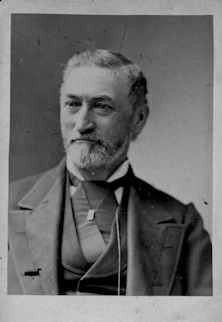It’s likely easiest to understand the history of Trinity Lime Rock if viewed in three sections. First, the historical context in which Trinity was born. Second, the Barnum and Richardson years, when Trinity was founded and prospered. Third, the years since World War I, when the parish struggled and finally emerged as the institution Trinity Lime Rock is today.
Before Trinity
In the 1800’s, Lime Rock (and the whole Upper Housatonic Valley) was a different place than it is today. There was a thriving iron industry that had begun in Lime Rock in the 1730s, with two blast furnaces and several forges and foundries right in Lime Rock. Lime Rock – the headquarters of the Barnum & Richardson Company – was at the center of the area industry, and the headquarters of an corporate presence with presences in Buffalo, Chicago, West Virginia, Michigan, St. Louis, Newark (NJ), New York City, and elsewhere.
Trinity’s Beginnings
By 1873, when the Barnum and Richardson families decided that Lime Rock needed an Episcopal church of its own, there were already Episcopal parishes in Sharon, Salisbury, and North Canaan. With the enthusiastic backing and financial support of US Senator William H. Barnum, the CEO of Barnum and Richardson, an important ecclesiastical
architect of the transition between late Gothic Revival and Richardson Romanesque in church architecture, Henry Martyn Congdon of New York City, was retained. An acre of land was obtained from the Ensign family, stone from I. N. Bartram’s quarry on Sharon Mountain was used (Bartram was also the contractor for the masonry), and work began on what initially may have been initially conceived as a mission of St. John’s Church in Salisbury, but which almost immediately was re-conceived as an independent parish. Interestingly, Trinity’s building was completed before there was a formally recognized congregation to worship in it. Trinity has often been called “The Church that Iron Built” and whoever coined that title understood perfectly how our parish came into being.
From the first, the Barnums intended Trinity to be a parish for all, regardless of social station. The incorporators of the parish ranged from a US Senator to a handyman in terms of occupation, and this quality of welcoming and accepting people regardless of who they were became part of Trinity’s DNA. It still is today. Today, Trinity is recognized as the only remaining part of the historic iron industry that is, over a century after the iron industry vanished, still in business, and still in its original (now historic) building.
The parish historian delivered a talk recently on the circumstances directly leading up the the creation of the parish. The text of the remarks are available online HERE
After the iron industry
When the local iron industry collapsed and rather rapidly vanished in the years following World War I, hard times came to Lime Rock and to Trinity. For half a century our survival was tenuous. While there was by then a documentable history of Trinity Lime Rock, whether there would be much of a future was doubtful at best. The parish was served by part-time clergy from St. John’s, from the former Christ Church in Canaan, and from the Salisbury School during these difficult years.
But as the area rebounded, so did Trinity. Beginning around 1950, the physical plant began to expand, with the addition of a parish hall in the early 1960s. Eventually seven adjacent acres were purchased, and around 2000 an additional wing was added, creating the Trinity we know today. At the same time, Trinity’s geographic spread began. Today our active parishioners include people living in no fewer than six states and three continents — and those numbers keep changing. We welcome our physically remote parishioners via our internet presence, especially our livestreamed services and via Zoom.
Trinity today
Over the years, Trinity was one of the first parishes in the Diocese of Connecticut to have a woman on the Vestry and a man on the Altar Guild. We were the first Connecticut parish to have had two sequential woman Rectors, and now have our third, the Rev. Heidi Truax.
And, to date, that’s an overview of the history of Trinity Lime Rock! We invite you to become a part of Trinity’s present and future — and eventually, like all of us, part of Trinity’s history!
A parishioner has recently written a comprehensive history of Trinity, called Trinity Lime Rock in Context – a History, available from Amazon.com

Here — thanks to Brian Wilcox — is a view of Trinity in its geographic context:


You must be logged in to post a comment.